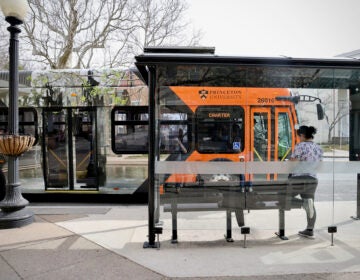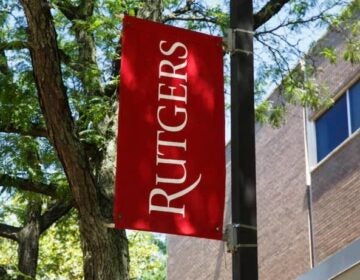Renaissance schools and the Abbot rulings
There’s been much press this week regarding George Norcross’s plan to open several charter schools in Camden under the auspices of the Urban Hope Act. That legislation, signed in January by Gov. Christie, permits up to four “Renaissance schools” to be built in Camden, Trenton, and Newark as long as each school is “agreed to by the school district, and is operated and managed by a nonprofit entity, including an approved charter school…”
This is a commentary from education blogger Laura Waters of NJ Left Behind.
There’s been much press this week regarding George Norcross’s plan to open up several charter schools in Camden under the auspices of the Urban Hope Act. That legislation, signed in January by Gov. Christie, permits up to four “Renaissance schools” to be built in Camden, Trenton, and Newark as long as each school is “agreed to by the school district, and is operated and managed by a nonprofit entity, including an approved charter school…”
First up is Camden, largely because of the formidable pull of George Norcross, who just announced that a kindergarten-5th grade school will be built in the Lanning Square neighborhood, with plans to gradually add on schools for older children. The proposed school, the KIPP Cooper Norcross Academy, will be run by the highly-regarded KIPP TEAM group in Newark and will feature extended school days and “a vigorous college prep program.” There’s guaranteed enrollment for all children in the catchment area, including those with disabilities. Doctors and nurses from Cooper University Hospital and med students from the Medical School of Rowan University Hospital will act as mentors to the school’s students.
The twenty-six traditional Camden public schools are pretty bleak; in fact, 23 of them are on the State’s list of the state’s 75 worst schools. According to the most recent DOE data, 84% of third graders at Lanning Square Elementary School failed the state assessment in language arts and 77% failed the math section. At Hatch Middle School, 88% of seventh graders failed the language arts portion of the state test and everyone failed the math section. The graduation rate at Camden High School in 2011 was 44.69%. Average SAT scores were 353 in math and 339 in verbal. Total cost per pupil is $22,306.
So what’s not to like about the proposed charter district in Camden? How could anyone be opposed to an improved educational opportunity?
This is where it gets interesting.
While NJEA signed on to the legislation (after the bill was changed to require that teachers in these schools have tenure rights), Education Law Center (ELC), primary advocates for Abbott district students, remains adamantly opposed. This opposition, cognitively dissonant as it may appear (an education advocacy group opposed to better education?) offers a window into a complex side of education politics in N.J.
When ELC testified against the Urban Hope Act to the Assembly Budget Committee, it criticized “the underlying reason for this bill,” which it said was “the shutdown of the school construction program by Gov. Christie and the Schools Development Authority in SDA districts.” Abbott districts are SDA districts and, as such, are entitled to full funding of school construction. In 2008, for example, the Legislature allocated $2.9 billion to cover construction costs. ELC believes that, as it testified, “SDA has refused to address hundreds of emergency and health and safety projects in some of the oldest, most dilapidated school buildings…The waste of taxpayer funds at the SDA since January 2010 amounts to a scandal of unprecedented proportions.”
The Abbott rulings deem that the SDA build new school buildings in cities like Camden. The Urban Hope Act bypasses those decisions, thus undermining the Abbott decisions (much like, as ELC and others argue, Ed. Comm. Chris Cerf is bypassing the Legislature on charter school law and other projects). It’s not about the kids; it’s about the sanctity of the Abbott rulings.
Don’t be too hard on ELC: it’s fought tirelessly for mechanisms to address the state’s educational inequities. But what happens when the solution you’ve fought for is obsolete? What happens when ameliorative measures, never dreamed of 30 years ago when the Abbott cases were first litigated, are enacted by a 21st century New Jersey Legislature?
Laura Waters is president of the Lawrence Township School Board in Mercer County. She also writes about New Jersey’s public education on her blog NJ Left Behind. Follow her on Twitter @NJleftbehind.
WHYY is your source for fact-based, in-depth journalism and information. As a nonprofit organization, we rely on financial support from readers like you. Please give today.




